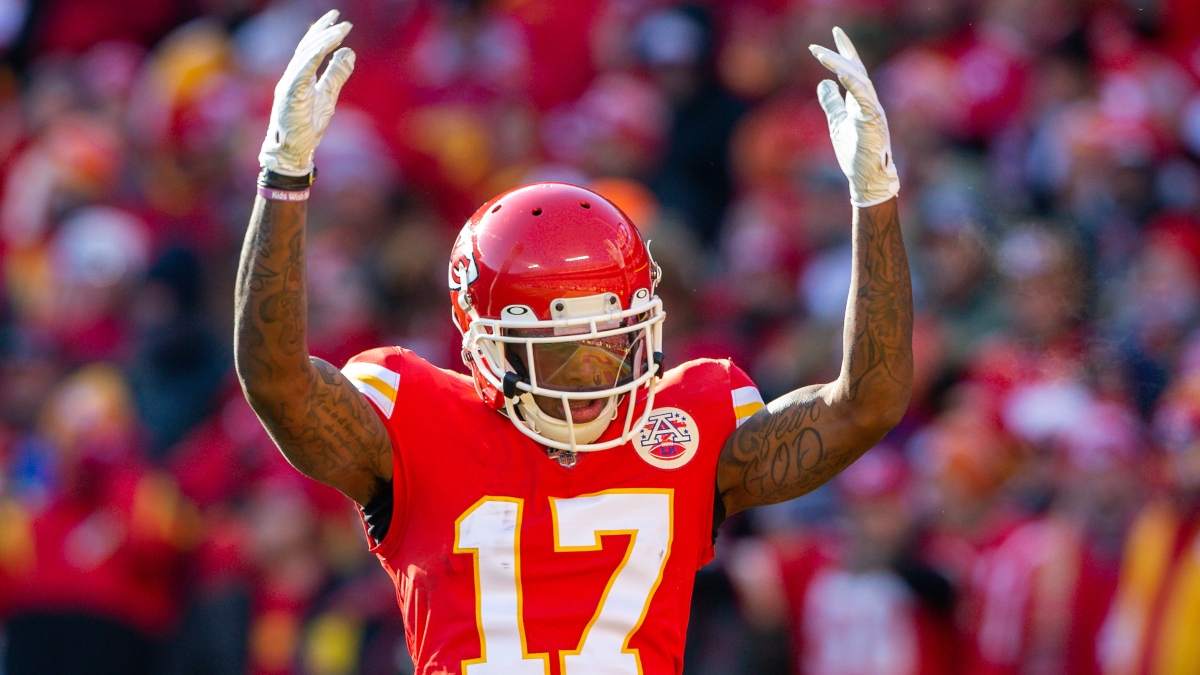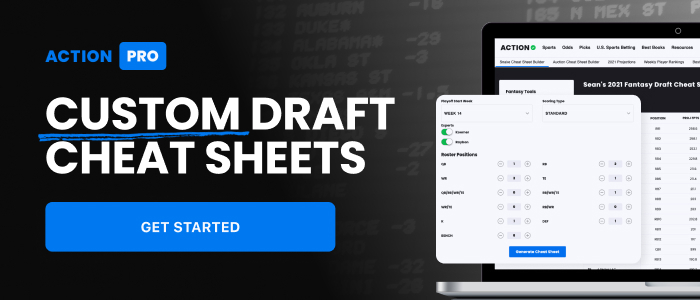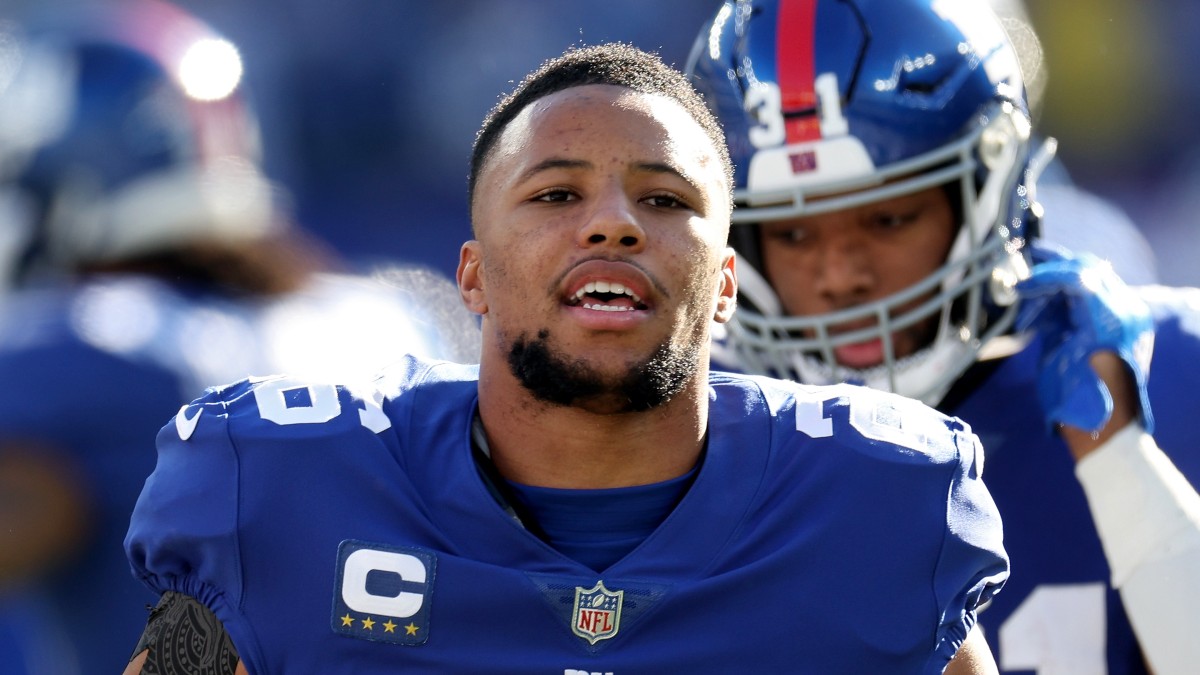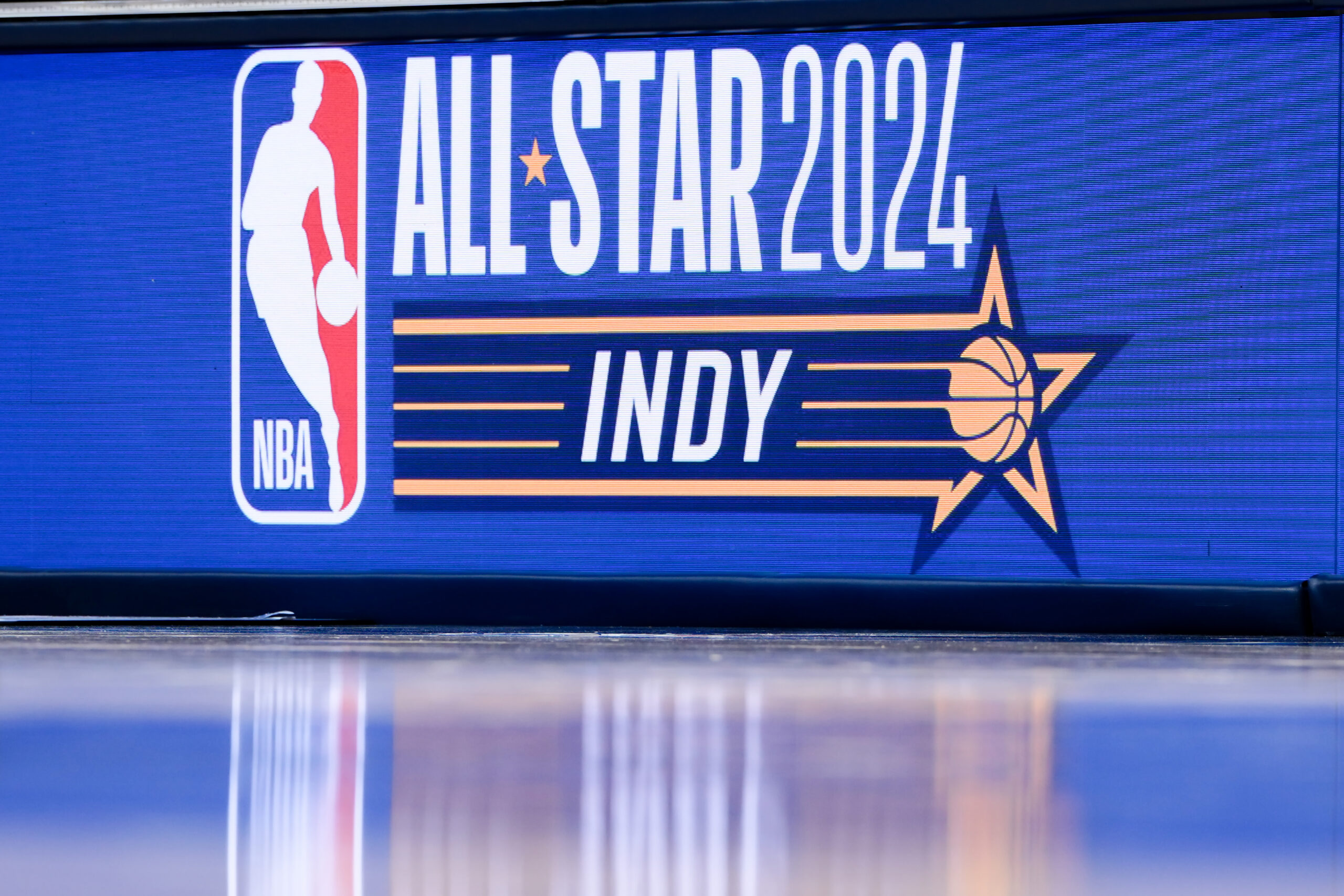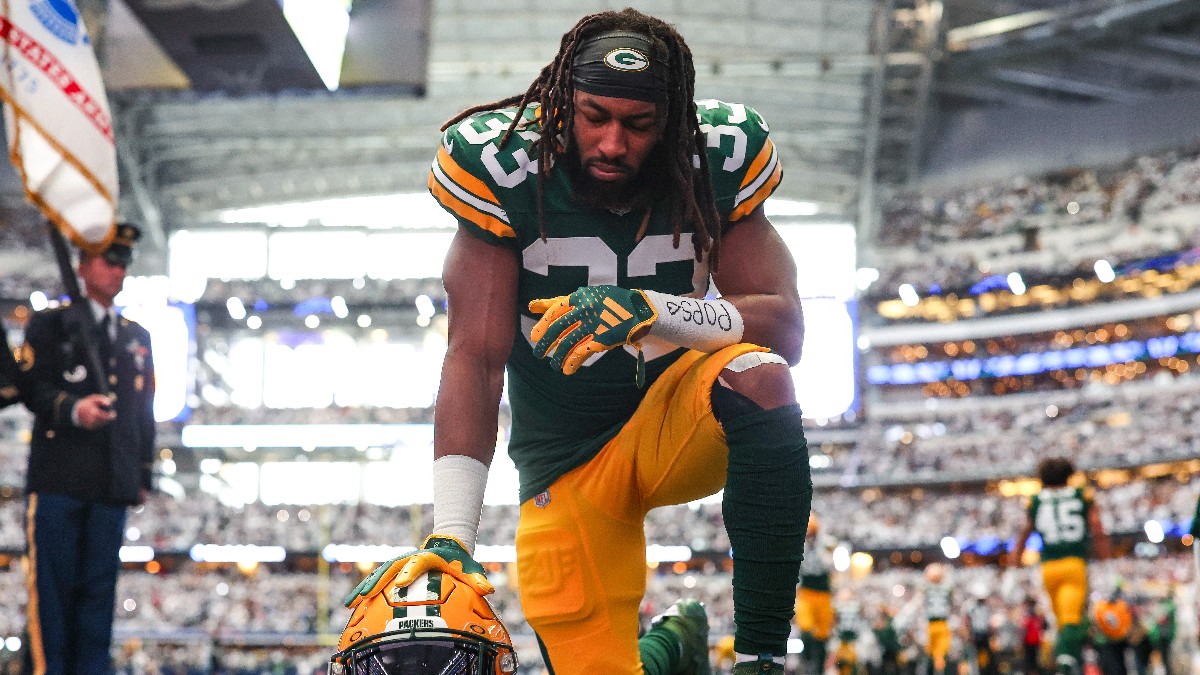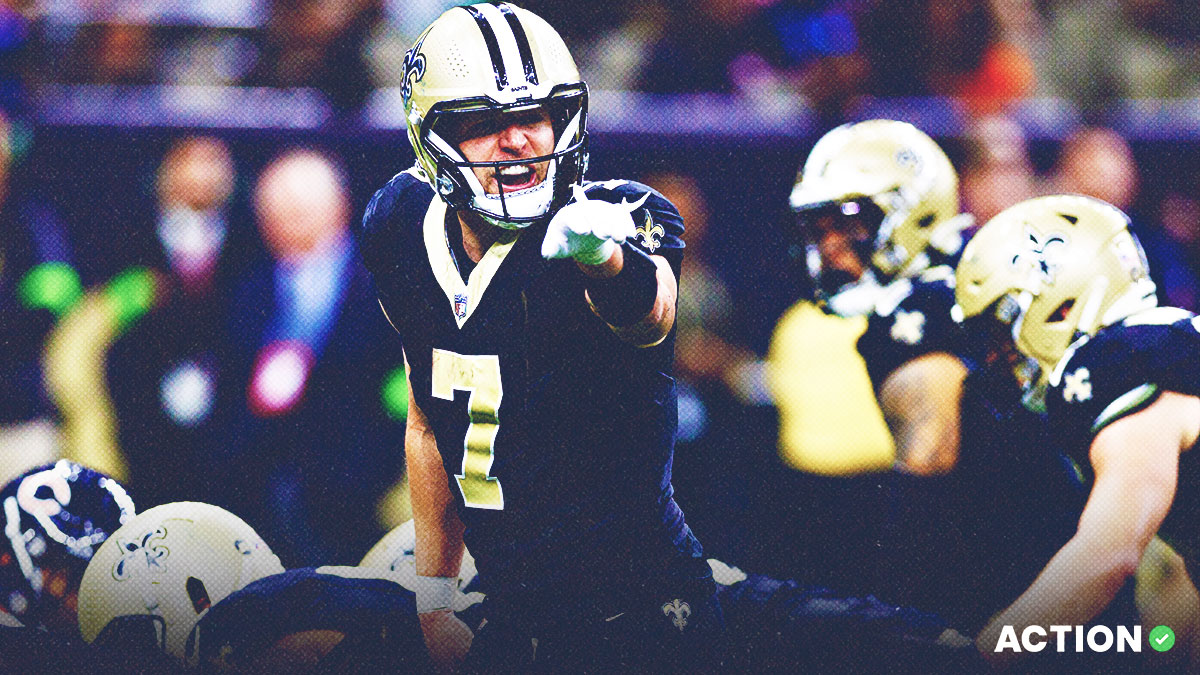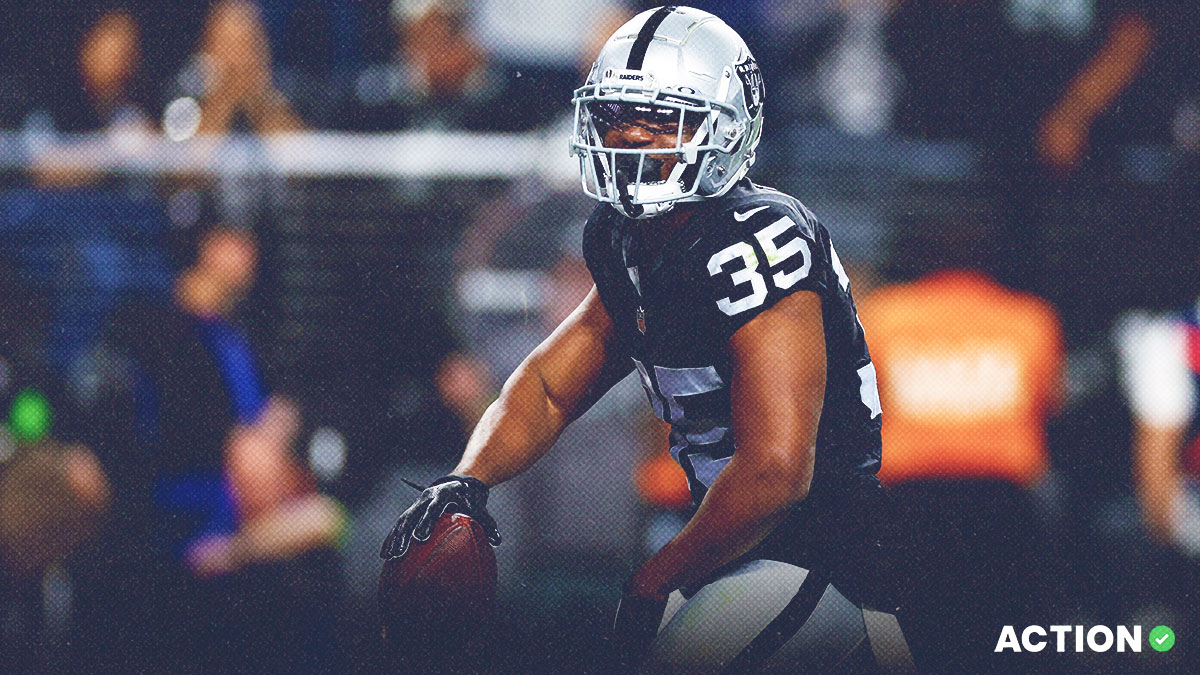The 2021 fantasy football draft season is here. Whether you're an old pro or a newbie, our trio of analysts have you covered on players you'd be wise to fade in redraft leagues but who provide exciting — if risky — upside in best ball.
Best Ball Targets Worth the Risk
Gabriel Davis, WR, Bills
Chris Raybon: After a productive rookie year in which Gabriel Davis finished second on his team in touchdown receptions (seven) and third in receiving yards (599), Davis enters Year 2 in Buffalo as the quintessential best-ball pick.
The name of Davis’ game is high-leverage targets. His aDOT was 17.1, with 32.8% of his targets occurring 20-plus yards downfield, according to PFF.
The 6-foot-2, 216-pounder was also second on the Bills in red-zone target share (13.0%) and converted them into scores at an above-average clip (30%).
A steady diet of bombs and red-zone looks is sure to lead to a mixture of spiked weeks and duds that make him best suited for best ball, but the beauty of investing in the 22-year-old Central Florida alum is that he has a legit shot at making the prototypical second-year leap and becoming Josh Allen’s true No. 2 receiver behind Stefon Diggs.
The presence of Emmanuel Sanders and Cole Beasley creates the look of a crowded receiving corps at first glance, but Beasley is 32 and Sanders is 34. Davis’ 73.3% snap rate trailed only Diggs (88.7%) among Bills receivers last season. When John Brown was out, Davis rarely came off the field, logging a snap rate of 93% or better six times. Now that Brown has been replaced by an aging Sanders, Davis is a good bet to approach a 100% snap rate on a weekly basis.
The scoring may come in bunches, but it should be light work for the second-year pro to outkick his ADP and finish among the top 50 wide receivers.
Mecole Hardman, WR, Chiefs
Sean Koerner: Mecole Hardman was a raw prospect coming out of Georgia, but the Chiefs spent their 2019 second-round pick on him, knowing they could be patient. At 5-foot-10, 187 pounds and with a blazing 40 speed at 4.33, Hardman is practically a Tyreek Hill clone. However, despite the Hill comparisons and playing in the most explosive offense in the NFL, Hardman has yet to finish as a top 55 WR in his first two seasons.
Hardman is still only 23 years old, and all signs point to him having a breakout Year 3. The Chiefs let Sammy Watkins walk in free agency and chose not to add any serious competition for this offense's WR2 role. Hardman has shined in camp, refining both his short and intermediate route-running skills. He is the favorite to be the No. 2 receiver in this offense, which comes with massive upside.
I view Hardman as a no-brainer pick in best ball at his current ADP (WR48). He is going to provide you with plenty of spiked weeks this season. However, it may be tough to predict when those spiked weeks will happen, making him a headache to own in redraft leagues. That's why I consider Hardman a much better best ball target, where his high ceiling/low floor profile makes him an asset.
Chase Claypool, WR, Steelers
Samantha Previte: When looking for high-upside players worth the risk in best ball, I generally picture boom-or-bust receivers (think: DeSean Jackson) who can provide solid return on investment in certain weeks and be automatically benched in others.
Chase Claypool immediately comes to mind.
The Steelers wide receiver corps is crowded and limited by aging quarterback Ben Roethlisberger, who was in a visible decline last season. The group was led by Diontae Johnson, who recorded 88 catches for 923 yards, seven touchdowns and finished as WR20, and JuJu Smith-Schuster, who recorded 97 catches for 831 yards, nine touchdowns and finished as WR18 in half PPR from Week 1 through Week 16.
Claypool ended the season with a solid 62 catches for 873 yards and nine touchdowns, finishing as WR23, but the then-rookie receiver had numerous weeks with very little production. He scored fewer than 10 fantasy points in half PPR scoring in eight of 16 weeks and nearly one quarter (23.7%) of his year-long (Week 1 through 16) production came from his four-touchdown game against the Eagles in Week 5.
With Pittsburgh's receiving depth chart remaining the same year-over-year, I do not predict much will change in terms of production patterns for Claypool. He was targeted 24% less than Johnson and 15% less than Smith-Schuster, catching 36% fewer passes than Smith-Schuster and 30% fewer passes than Johnson. He is a high-variance, big-play dependent player, making him risky in season-long formats but well-suited for best ball.


